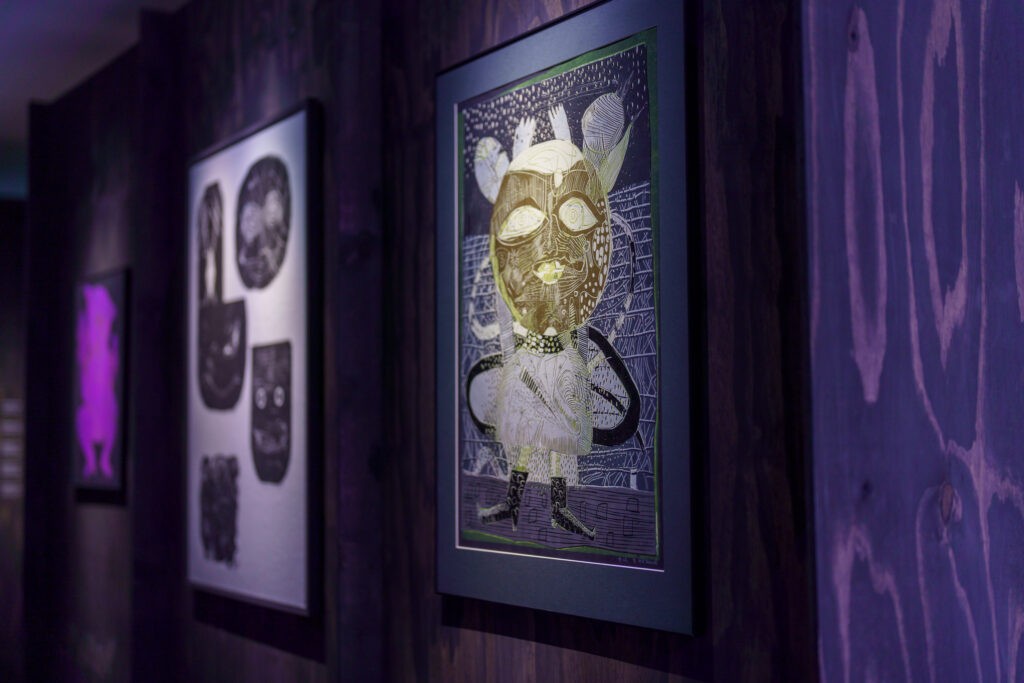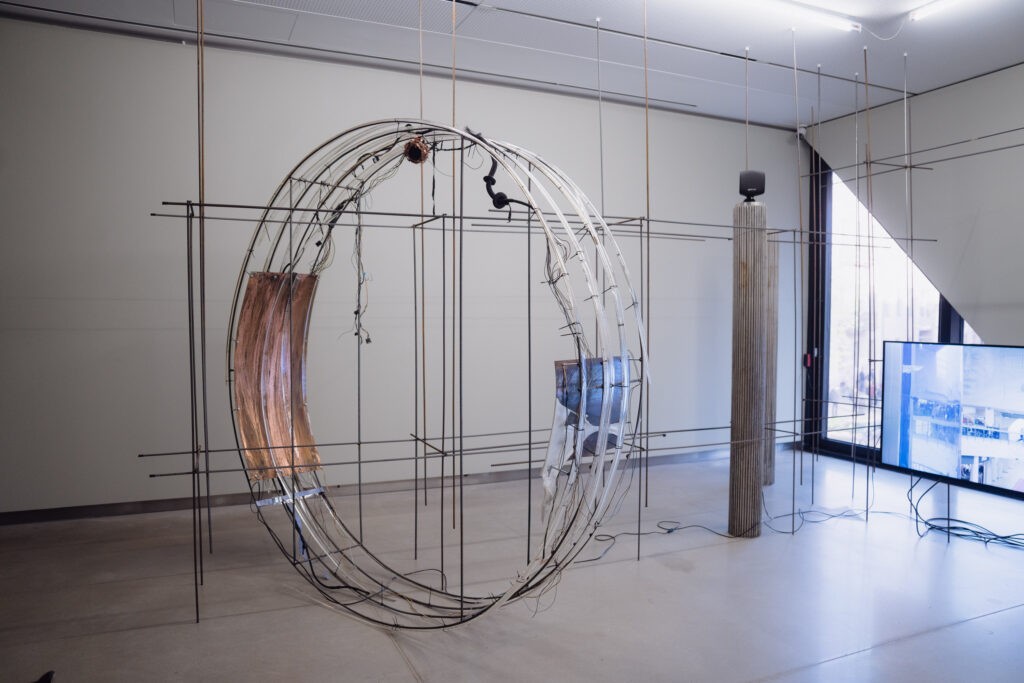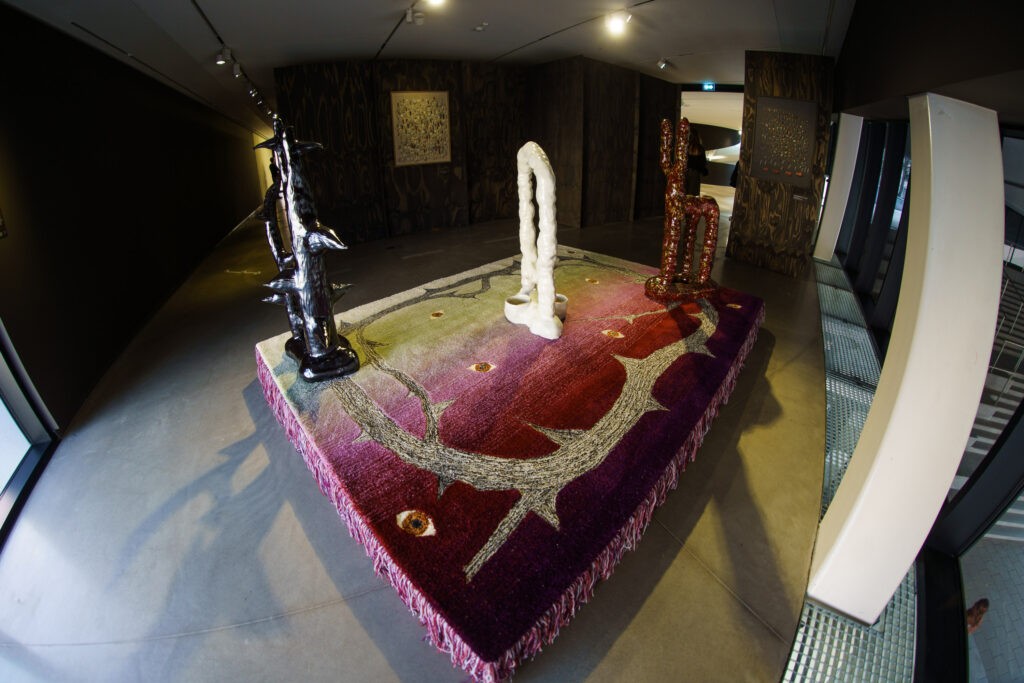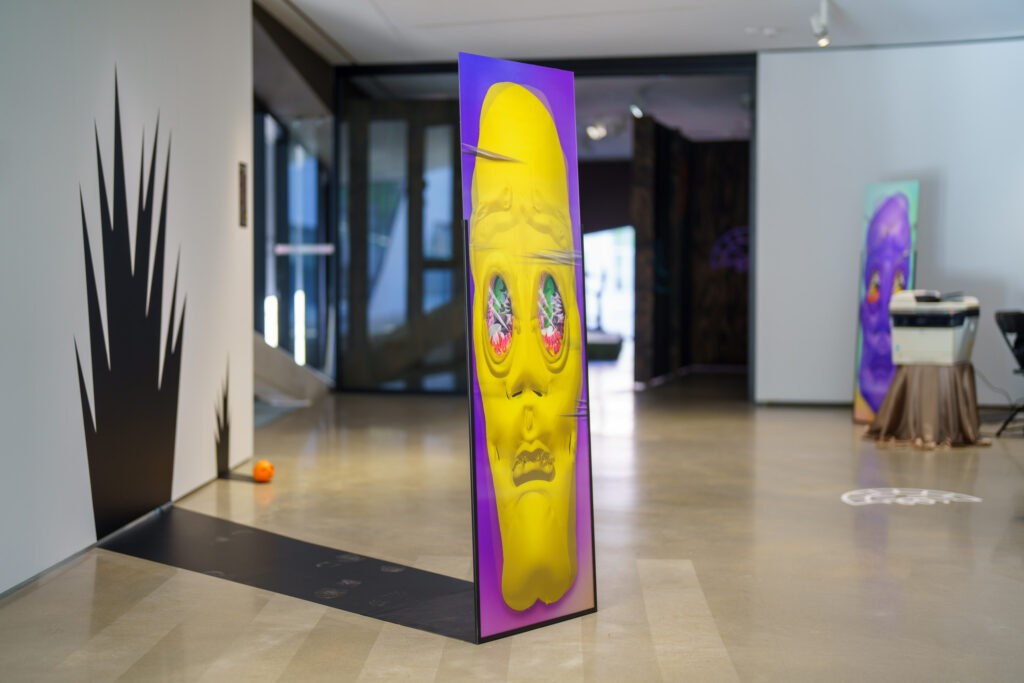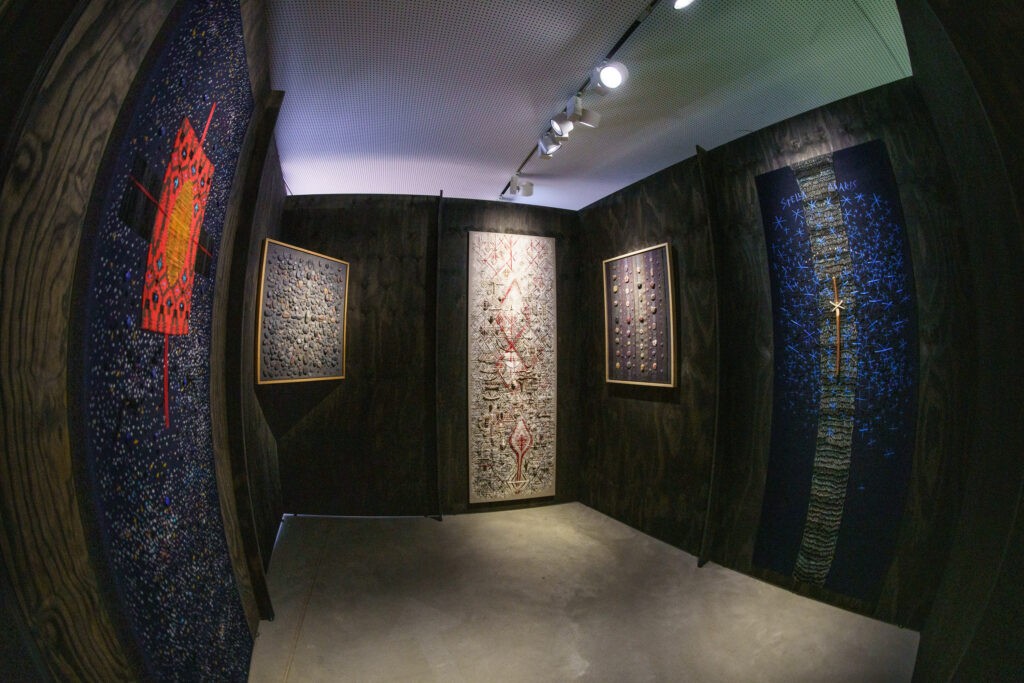A new small Baltic art exhibition "Down the rabbit hole" has opened in the MO Museum. The joint work of MO and the curatorial collective "Roots to Routes" (Justė Kostikovaitė, Maija Rudovska and Merilin Talumaa) invites visitors to reflect on how the ideas of returning to nature, spirituality and wellness practices that are actively spreading in modern society are often combined with conspiracy theories and alternative worldviews.
Presenting works of art from Lithuania, Latvia and Estonia from the 1970s to the present day, the exhibition invites us to reflect on the changes in modern society and evaluate them in the context of the period of Soviet occupation, when concerns about ecological themes and turning to nature were intertwined with ideas of national revival.
According to the curators of the exhibition, the pandemic and other recent global processes have shown that the idea of a return to nature is now often used in the narratives created by far-right political views, forming alternative worldviews or even conspiracy theories. In addition, neopaganism has become increasingly popular in recent years, both infiltrating mass culture and intertwining with conspiratorial beliefs, and various spiritual practices offer hope for solving life's complex problems.
"With increasing interest in alternative means to escape from everyday challenges, we see a tendency to trust in something other than science. This phenomenon particularly manifested itself during the COVID-19 pandemic, when skepticism towards proven scientific solutions or even the government intensified so that groups of people seeking an alternative lifestyle began to actively oppose vaccinations," observes curator J. Kostikovaitė.
The exhibition "Down the rabbit hole" exhibits the works of ten different generations of Baltic artists - Līga Spundė, Anastasia Sosunova, Viktorija Daniliauskaitė, Darja Popolitova, Aistė Ramūnaitė, Vita Zaman, Katrīna Neiburga, Laura Põld, Nijolė Valadkevičiūtė and Gertrūda Gilytė.
The curators of the exhibition emphasize that the interaction between conspiratorial spirituality, the search for self, the revival of pagan ideas and Christianity is revealed in the exhibition through the multifaceted gaze of the artists: from critical to, on the contrary, favorable and supportive. The range of topics explored in the works of the artists includes both an ironic approach to modern society, New Age and other spiritual practices or esoteric spirituality, as well as a favorable look at a close connection with nature, mythological images or religious inspirations.
The curators also argue that various self-help techniques that promise a return to the "natural" order are widely exploited by corporate cultures that promote toxic productivity and excessive consumption. Although various self-help methods, such as alternative medicine, have existed throughout history, in recent years these methods have taken over the general public, in large part due to social media. influencers. According to the curators, these themes are addressed in the exhibition from different perspectives.
"For example, the artist Gertruda Gilytė reveals two layers in her work - it talks about knitting as a self-help tool that becomes a kind of obsession, and right here it is looked at ironically. However, the exhibition also includes works that promote self-help and ways to calm down. For example, in the works of Vita Zaman, the idea of manifestation is seen as a powerful way to convince yourself that you are the source of any change, even in the face of a serious problem, such as an illness," says curator Maija Rudovska.
The curators of the exhibition note that a number of people who have lost or left their jobs during the pandemic have become self-help gurus, teaching life or health-enhancing techniques, thereby instantly capitalizing on the field.
“Social media in particular has fueled the massive proliferation of gurus in business, success, self-awareness and more. Any self-improvement tool now becomes a commodity. Society wants to believe in something, and when one belief fails, we look for another. This use of faith has moved to social media, where people are taught certain self-help formulas and protocols", emphasizes J. Kostikovaitė.
